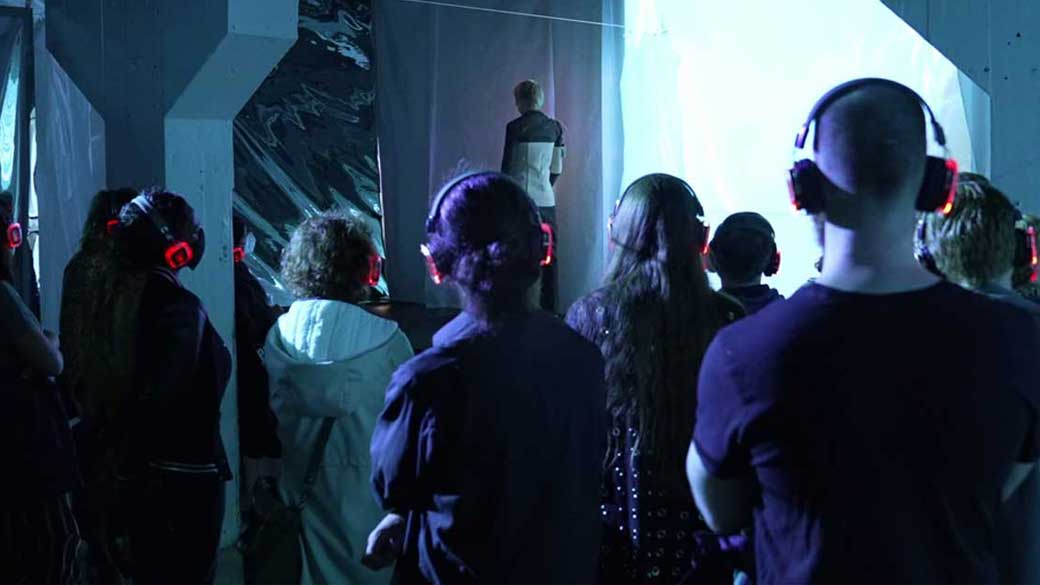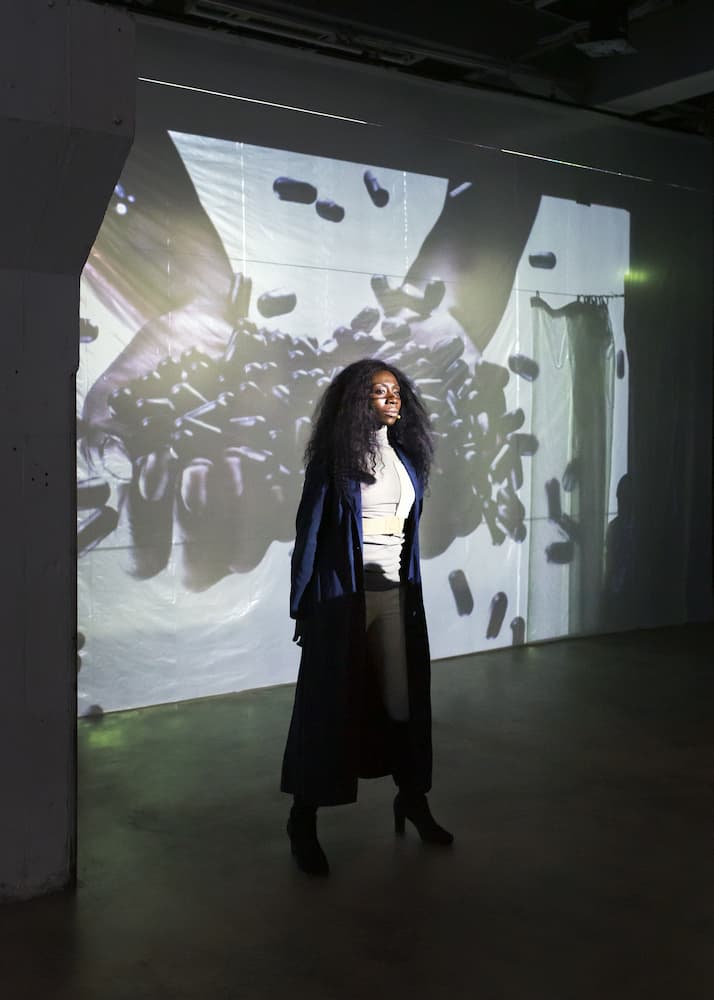
Holy Bitch Project – immersive theatre
In “The Holy Bitch Project”, Christiane Mudra uses interviews with affected women and experts to explore the dynamics of analog and digital violence against women in Germany, as well as its cultural and societal breeding ground – staged as immersive theatre.
The project has been featured in various articles, underlining its impact and reach.
About the Staging of the Immersive Theatre Piece and The Holy Bitch Project
Inspired by the film The Matrix (1999), the audience – like the film’s protagonist Neo – swallows the red pill, which grants a glimpse behind immaculate façades. The audience follows the performers into an interactive labyrinth of scenes and binaural sound, in which domestic, sexualised and digital violence becomes tangible and where they participate actively in the performance.
Since the alt-right movement and the misogynist “Incels” use motifs from the film to spread misogynistic conspiracy narratives, The Holy Bitch Project consciously reclaims the Matrix world and establishes a feminist counter-narrative.
The project overcomes the traditional separation of stage and auditorium by involving the audience interactively and creating a more intense connection between art and life.
Through the different spaces and the performers’ interaction with the audience, a new level of immersion is created. By diving into people’s stories, the connection to their fates becomes clearer. The stage becomes a concept and an active part of participation, where the performers’ acting plays a central role.
What is Immersive Theatre?
Many audience members ask themselves this question when they encounter this type of performance for the first time. The term immersive theatre describes a form of theatre in which performers and audience are integrated into the same environment, and the boundaries between reality and fiction often become blurred. VR does not necessarily play a role in creating immersion in this world.
Immersive theatre is characterised by the participation of the audience, which is actively involved in the performance. This can happen in different ways – from full surround sound and lighting to direct interaction between actors and audience. This involvement amplifies the immersive experience by allowing audience members to become part of the action and interact directly with the performers. Some might describe this as an immersive experience because it can involve physical contact or simulated experiences that go beyond what most people are used to from traditional theatre performances.
Challenges for Sound and Audience Involvement
This work, belonging to the category of immersive theatre, is packed with contemporary technologies. Insights gained from using these technologies show how crucial they are for creating a successful immersive theatre experience. The project deliberately deploys its research in different formats such as performances in urban space, audio drama, podcast, film, 360° live video, installation, lecture and publication. investigative theater experiments with digital tools such as (web) apps, XR, AI, 3D sound and more, always seeking interaction with the audience.
For me, the major challenge in this collaboration was that listeners wear headphones throughout the entire piece. A silent-disco-style headphone system for over 50 people was rented. I produced audio content in advance to portray various scenarios depicting violence against women. The aim was not to recreate these situations in a sensational or lurid way, but to convey empathetically how such problems can arise in everyday life. These theatrical scenes are designed to be interactive, so that the audience is actively integrated into the performance.
Thanks to 3D sound, it was certainly possible to create a stronger immersion and exploration of the emotional world. In the storytelling, we jumped into the character’s subjective perspective. As a visitor to this immersive theatre piece, you sometimes left the role of mere observer. This also meant that recordings from a first-person perspective were realised. An example of a similarly immersive and emotionally powerful experience is the project ROBIN – Watch for Wishes. The way the audience is drawn in by this immersive experience enhances the emotional impact and the overall experience.
In addition, there were also spoken live texts. At times, they were combined with pre-recorded material. This produced, for example, an inner dialogue of the actors with their past selves. This “I” was literally recorded in a time-shifted way. A considerable challenge for all performers involved. The timing was critical, and there were even scenes in which several people spoke completely simultaneously. Thanks to binaural technology, however, I was able to keep speech intelligibility high across all narrative levels at the same time.
On top of that, 3D sound created plenty of surprises: thanks to externalisation – the realistic sensation that sound appears to come from outside, despite wearing headphones. At times, this effect was used quite deliberately to blur the impression of whether an actor was speaking live or whether the voice was pre-recorded. This made it possible, for instance, to convey the victims’ helpless situation through sound.






Insights, Outcome and Critique
The immersive theatre piece was – and rightly so – praised by the press in more than one article:
Outstanding are Mudra’s in-depth research and the use of cutting-edge technologies. The project’s website was instrumental in supporting the immersive theatre experience and helped reach a broader audience.
I am delighted, as a 3D sound designer, to have accompanied the project from the initial concept through recording all the way to the world premiere.
Immersive technologies open up a wealth of possibilities for theatre productions to rethink content. Binaural audio is only the beginning; within this context, I have already worked with VR and been able to overcome many of the limitations of stereo sound.
Curious what else is possible? Get in touch now